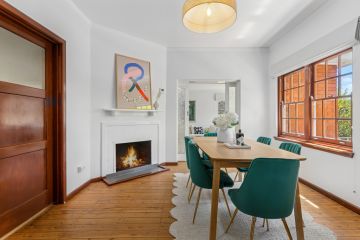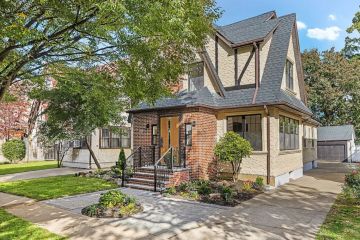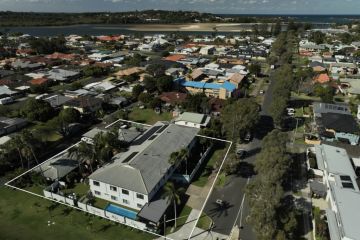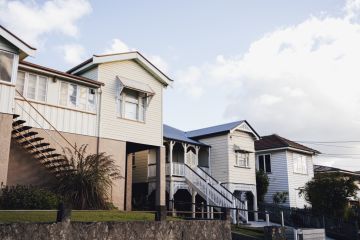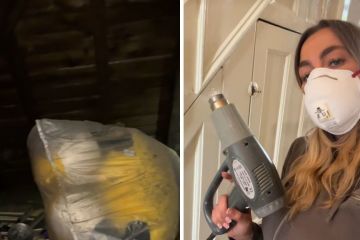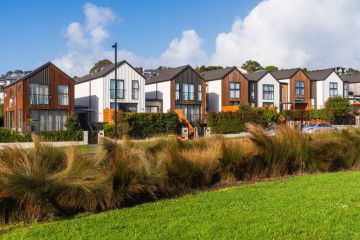Hobart real estate prices continue to rise to record levels

It’s been hit by a global pandemic, closed borders and a recession, but nothing, it seems, can knock Hobart down from its pedestal as Australia’s most popular housing market.
And after five years of strong growth, COVID-19 has served only to turbo-charge price rises, outstripping those in all the other capital cities, and beating the national figure by more than seven times in the past quarter.
“That kind of growth is extraordinary, really,” said Domain senior research analyst Nicola Powell, of the results in Domain’s House Price Report for the September quarter. “It remains a hot market, offering affordability, lifestyle and lots of space.
“With interest rates now being slashed further, its affordability will continue to be boosted and the pull from mainland Australia to Tasmania is likely to be even stronger post-pandemic,” Dr Powell said.
The report shows Hobart’s median house price rose by 6.9 per cent in the past quarter, crushing Melbourne’s zero-growth figure, and dwarfing Sydney’s rise of 1.2 per cent, Greater Brisbane’s 0.4 per cent, Perth’s 0.9 per cent and the national figure of 0.9 per cent.
Year-on-year, its performance has been exceptional, too. The median price of a Hobart house rose 15.7 per cent in the year, nearly two-and-a-half the growth rate of 6.8 per cent for Sydney, almost 10 times Melbourne’s 1.6 per cent, more than four times Brisbane’s 3.7 per cent and nearly three-and-a-half times the national average of 4.6 per cent.
Median house prices
| HOUSES | |||||
| Capital City | Sep-20 | Jun-20 | Sep-19 | QoQ | YoY |
| Sydney | $1,154,406 | $1,141,097 | $1,080,996 | 1.2% | 6.8% |
| Melbourne | $875,980 | $876,097 | $862,063 | 0.0% | 1.6% |
| Brisbane | $596,316 | $594,173 | $574,838 | 0.4% | 3.7% |
| Adelaide | $564,927 | $549,574 | $529,164 | 2.8% | 6.8% |
| Canberra | $817,810 | $789,905 | $745,004 | 3.5% | 9.8% |
| Perth | $534,336 | $531,557 | $521,911 | 0.5% | 2.4% |
| Hobart | $555,754 | $519,705 | $480,429 | 6.9% | 15.7% |
| Darwin | $539,463 | $505,896 | $503,214 | 6.6% | 7.2% |
| National | $811,966 | $804,545 | $776,144 | 0.9% | 4.6% |
Source: Domain House price report, September quarter, 2020
It now sits at $555,754, still well below Sydney’s median of $1,154,406 and Melbourne’s $875, 980, but fast catching up to Brisbane’s $596,316.
Tasmanian-based independent economist Saul Eslake says the phenomenal growth is largely a result of the state’s dramatic rise in population and the perception of its transition from “bogan” to “sophisticate”.
“In the 25 years from December 1990 to 2015, the population grew an average of 0.4 per cent per annum,” he said. “Since then to the March quarter, it’s had 1.1 per cent average annual growth. That’s a dramatic increase.
“The flow of people across the Bass Strait has now started to reverse. Before, it was people in their 20s and early 30s leaving Tasmania, and older tree changers and downsizers coming in towards the end of their lives.
“But now there’s been a significant turnaround in interstate migration. And MONA has single-handedly changed the way people see Tasmania, where instead of being bogan, it’s about more sophistication, art, good food and hotels,” Mr Eslake said.
He believes its market also held up surprisingly well during COVID-19. During the June quarter alone, on Australian Bureau of Statistics figures, when borders were closed and some areas were in lockdown, Tasmania still received 387 more people than it lost.
“Tasmania handled the pandemic well and people see it as a safe place to go and live, especially when they can now work from home,” he said. “Its big rival as a place to live was always Victoria, but they stuffed that.”
The demand for homes has been so strong, Hobart agents are having trouble trying to raise enough supply. Matt Carne, principal of Raine & Horne Eastern Shore, said listings were down 25 per cent on this time last year, meaning interstate, overseas and first-home buyers were all having to battle it out against investors seeing a good opportunity, causing prices to soar.
Three recent open homes attracted 118, 76 and 63 groups through, with one, a three-bedroom house at 2 Ninabah Street, Howrah, receiving 20 written offers and selling for $552,000, $92,000 over its asking price.
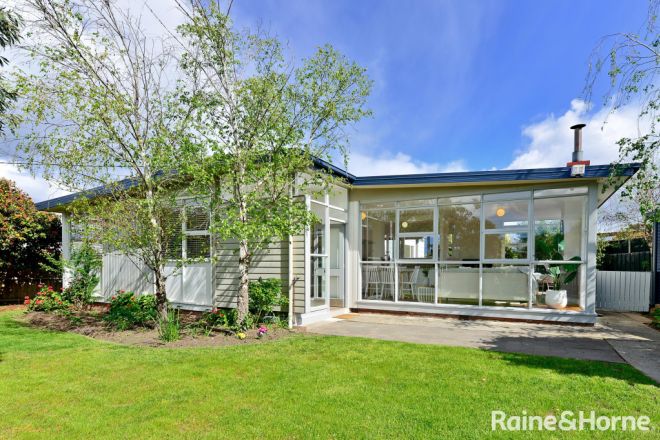
“The market has been absolutely powering along,” said Mr Carne. “I think we’re fortunate with our geography and people see us as a safe haven and want to get out of the rat race of mainland cities.”
While Domain Group figures show Hobart has been the strongest capital city market for houses in the past five years, with prices growing 66.3 per cent, and its nearest contender Canberra at 29.6 per cent, COVID-19 has boosted its strength.
Adrian Kelly, ReaI Estate Institute of Australia national president, and CEO of View Real Estate in Hobart, said: “COVID has certainly amplified the growth with so many people coming from the big island, particularly from the other capital cities, because they want to get out.
“The big problem is supply, and a lot of people won’t sell because they know they’ll have trouble buying, too. Our average days on market are now two to three.”
Even though Tasmania’s borders aren’t due to re-open to people from NSW until November 6, and Victoria is still under review, that’s done nothing to stop the frenzy. Mr Kelly recently sold a four-bedroom house at 81 Diamond Drive, Blackmans Bay, listed at $700,000 to a Melbourne buyer sight unseen for $730,000. An expat from Los Angeles bought another home in Sandy Bay for $1.6 million without seeing it.
In the last Domain rental report, Hobart was found to also have the country’s fastest rising rents, at 4.4 per cent over the year, and its tightest vacancy rate – a minuscule 0.6 per cent.
“It’s just in so much demand now as it’s seen as so safe; a small city without the traffic, pollution and agro of other cities, but with lots of natural beauty,” said St Andrews Estate Agents’ Steve Yannarakis. “And, you’ve now got all the services and amenities and theatre and festivals of the big city, without the hassles.”
We recommend
We thought you might like
States
Capital Cities
Capital Cities - Rentals
Popular Areas
Allhomes
More
